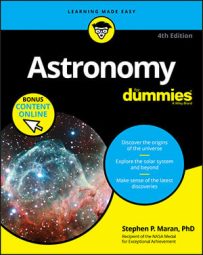"The Light from That Star Took 1,000 Light-Years to Reach Earth"
Many people mistake the light-year for a unit of time on par with units like a day, a month, or an ordinary year. But a light-year is a unit of distance, equal to the length that light travels in a vacuum over a period of one year.A Freshly Fallen Meteorite Is Still Hot
Actually, freshly fallen meteorites are cold; an icy frost (from contact with moisture in the air) sometimes forms on a frigid stone that has recently landed. When an eyewitness says that he saw a meteorite fall to the ground and that he burned his fingers on the rock, the account may be a hoax. A quick trip through Earth's atmosphere isn't enough to substantially heat a rock that has spent the last several million years in the deep freeze of outer space.Summer Always Comes When Earth Is Closest to the Sun
The belief that summer comes when Earth is closest to the Sun is about the most common error of them all, but common sense should tell you that the belief is false. After all, winter occurs in Australia when the United States is experiencing summer. But on any given day, Australia is just as far from the Sun as the United States. In fact, Earth is closest to the Sun in January and farthest from the Sun in July.The Back of the Moon Is Dark
Some people think that the back of the Moon, which faces away from Earth (astronomers call it the "far side") is dark. They may even call it the "dark side" of the Moon. Sometimes the far side is dark, but sometimes it is bright, and much of the time, part of it is dark and the rest of it is bright. In that way, the far side of the Moon is just like the near side, which faces Earth. When you see a full Moon, the near side is all bright and the far side is all dark. At new Moon, when the side of the Moon that faces Earth is dark, the far side of the Moon is bright — if we could see the far side then, it would look like a full Moon.The "Morning Star" Is a Star
The "morning star" isn't a star; it's always a planet. And sometimes two morning stars appear at once, such as Mercury and Venus. The same idea applies to the "evening star": You're seeing a planet, and you may see more than one. "Shooting stars" and "falling stars" are misnomers, too. These "stars" are meteors — the flashes of light caused by small meteoroids falling through Earth's atmosphere. Many of the "superstars" you see on television may be just flashes in the pan, but they at least get 15 minutes of fame.If You Vacation in the Asteroid Belt, You'll See Asteroids All Around You
In just about any movie about space travel, you see a scene in which the intrepid pilot skillfully steers the spaceship past hundreds of asteroids that hurtle past in every direction, sometimes coming five at a time. Moviemakers just don't understand the vastness of the solar system, or they ignore it for dramatic purposes. If you stood on an asteroid smack dab in the middle of the main asteroid belt between Mars and Jupiter, you'd be lucky to see more than one or two other asteroids, if any, with the naked eye. Even in the asteroid belt, outer space is mostly empty space.Nuking a "Killer Asteroid" on a Collision Course for Earth Will Save Us
You come across many common errors about asteroids, and various Hollywood doomsday movies and media reports on "killer asteroids" have provided ample but unfortunate opportunities to reinforce these misunderstandings among the public.Blowing up an asteroid on a collision course with Earth with an H-bomb may only create smaller and collectively just-as-dangerous rocks, all still heading for the planet. A less risky idea is to attach a rocket motor to gently propel the asteroid just the slightest bit forward or backward in its orbit, steering it so it doesn't get to the same place in space as Earth at the same time. Even better, we might launch a so-called gravity tractor satellite to gently pull the asteroid from its original trajectory so it misses Earth.

